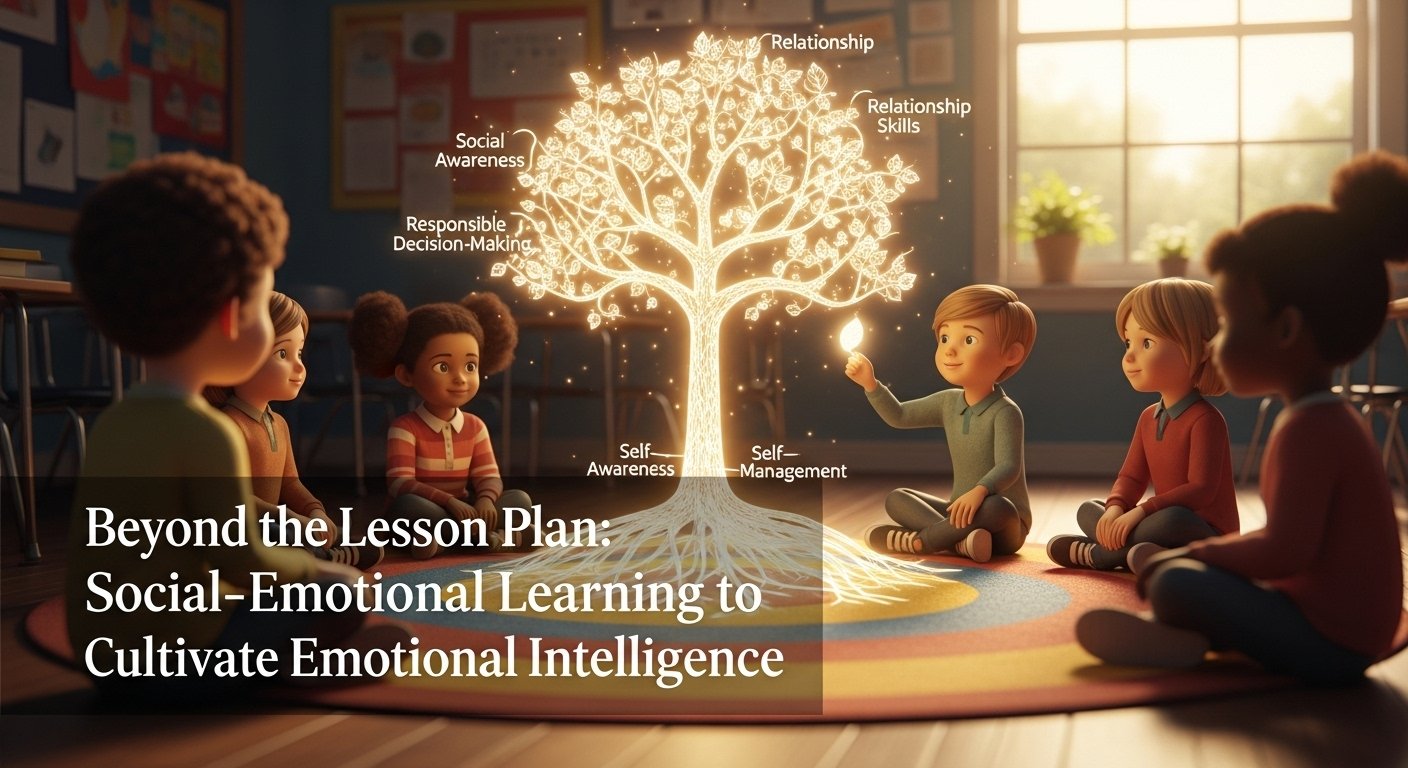Beyond the Lesson Plan: Using Social-Emotional Learning to Cultivate Emotional Intelligence
The paper airplane sailed gracefully over the heads of five engrossed students before nosediving onto Maya’s worksheet. The room froze. Leo, the plane’s pilot, immediately flushed crimson with a mix of shame and defiance. The old script was ready to play out: a sharp reprimand, a lost recess, a note home. Another day derailed.
But that day, I took a breath and tried something different. Instead of focusing on the action, I tried to understand the emotion behind it. “Leo,” I said, keeping my voice calm. “I see you. Throwing things isn’t our rule, but I’m wondering if you’re trying to tell me something. Are you feeling restless? Bored? Maybe something else?”
His defiance cracked. His shoulders slumped. “I just don’t get it,” he mumbled, pointing to his math book. “And everyone else is so fast.” In that moment, the behavior wasn’t defiance; it was a cry of frustration, a poorly sent signal asking for help. This shift in perspective—from punishment to curiosity—is the very heart of Social-Emotional Learning.
Social-Emotional Learning isn’t another box to check on the curriculum map. It’s not a weekly 20-minute lesson on “being nice.” It’s a transformative framework for teaching students the language of their inner lives. It’s the practice of equipping them with the skills to navigate their own emotions, build healthy relationships, and make responsible decisions. This is the foundational work that makes all other academic learning possible.
What Exactly is Social-Emotional Learning? Moving Beyond the Buzzword
The Collaborative for Academic, Social, and Emotional Learning (CASEL), the leading authority in the field, defines Social-Emotional Learning as the process through which all young people and adults acquire and apply the knowledge, skills, and attitudes to:
- Develop healthy identities
- Manage emotions and achieve personal and collective goals
- Feel and show empathy for others
- Establish and maintain supportive relationships
- Make responsible and caring decisions
Think of it as the core curriculum for the human experience. While algebra teaches us to solve for x, Social-Emotional Learning teaches us to solve for understanding, connection, and resilience.
Top 10 Free Online English Courses with Certificates in 2025
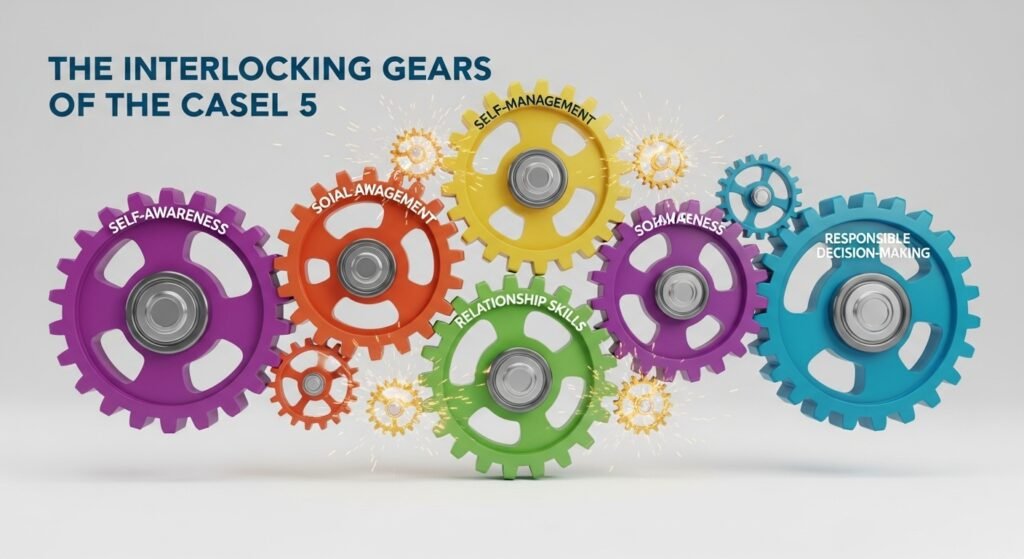
The CASEL 5: The Core Competencies of SEL
CASEL organizes these skills into five interrelated core competencies, which provide a excellent roadmap for implementation:
- Self-Awareness: The ability to recognize one’s own emotions, thoughts, and values and how they influence behavior. This is the “what am I feeling?” foundation.
- Self-Management: The ability to successfully regulate one’s emotions, thoughts, and behaviors in different situations. This is the “what do I do with this feeling?” skillset.
- Social Awareness: The ability to take the perspective of and empathize with others, including those from diverse backgrounds and cultures.
- Relationship Skills: The ability to establish and maintain healthy and rewarding relationships. This includes clear communication, active listening, cooperation, and conflict resolution.
- Responsible Decision-Making: The ability to make constructive and respectful choices about personal behavior and social interactions based on ethics, safety, and social norms.
Why SEL is Non-Negotiable in the Modern Classroom
The value of Social-Emotional Learning extends far beyond creating a “kinder” classroom. Its impact is profound, measurable, and critical for future success.
- Academic Achievement: A monumental 2011 meta-analysis published in the journal Child Development found that students who participated in evidence-based SEL programs showed an 11 percentile-point gain in academic achievement. When students aren’t consumed by anxiety, distracted by conflict, or shut down by frustration, their brains are free to focus on math, history, and science.
- Improved Classroom Climate: SEL reduces bullying, decreases classroom disruptions, and improves overall student-teacher rapport. It creates a space where students feel safe to take academic risks and make mistakes.
- Long-Term Life Success: Employers consistently rank skills like collaboration, communication, and problem-solving—core SEL competencies—as more important than technical skills. SEL prepares students for the workforce and for life.
- Addressing Mental Health: While not therapy, SEL provides universal Tier 1 support for all students by giving them a toolkit to manage stress, anxiety, and negative emotions. It’s a proactive approach to mental well-being.
Top 10 Free Online English Courses with Certificates in 2025
| Traditional Approach | SEL-Integrated Approach |
|---|---|
| Focuses solely on the misbehavior. | Focuses on the unmet need or unmanaged emotion behind the behavior. |
| Teacher-directed solutions (“Go apologize”). | Facilitates student-driven solutions (“What can we do to make this right?”). |
| Emotional vocabulary is limited (mad, sad, happy). | Expands emotional vocabulary (frustrated, disappointed, anxious, hopeful). |
| Conflict is a disruption to be stopped. | Conflict is a learning opportunity to be navigated. |
Practical SEL Approaches for Building Emotional Intelligence
Theory is great, but practice is everything. Here are actionable strategies, framed by the CASEL 5, that you can implement tomorrow.
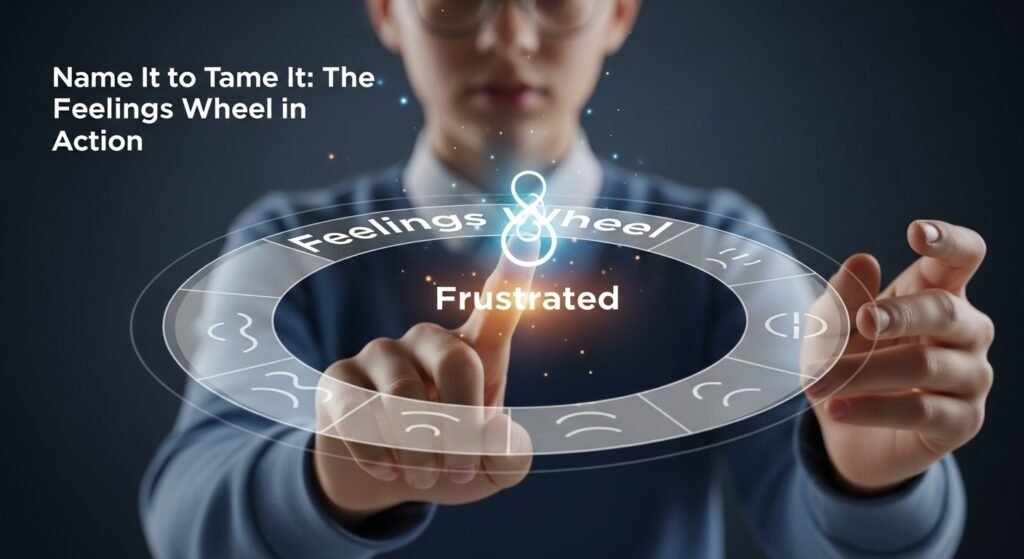
1. Building Self-Awareness: The “Feeling Wheel” & Check-Ins
Students can’t manage what they can’t name.
- Strategy: Start the day or class period with an “emotional temperature check.” Use a simple “How are you feeling today on a scale of 1-5?” or a more nuanced tool like a Feelings Wheel. This simple tool moves them beyond “good” or “bad” to more precise words like “overwhelmed,” “peaceful,” or “curious.”
- In Practice: “Alright class, take a quiet moment. Point to the word on the wheel that best fits your inner weather right now. You don’t have to share why, just notice it for yourself.” This daily ritual normalizes talking about emotions and builds crucial self-awareness.
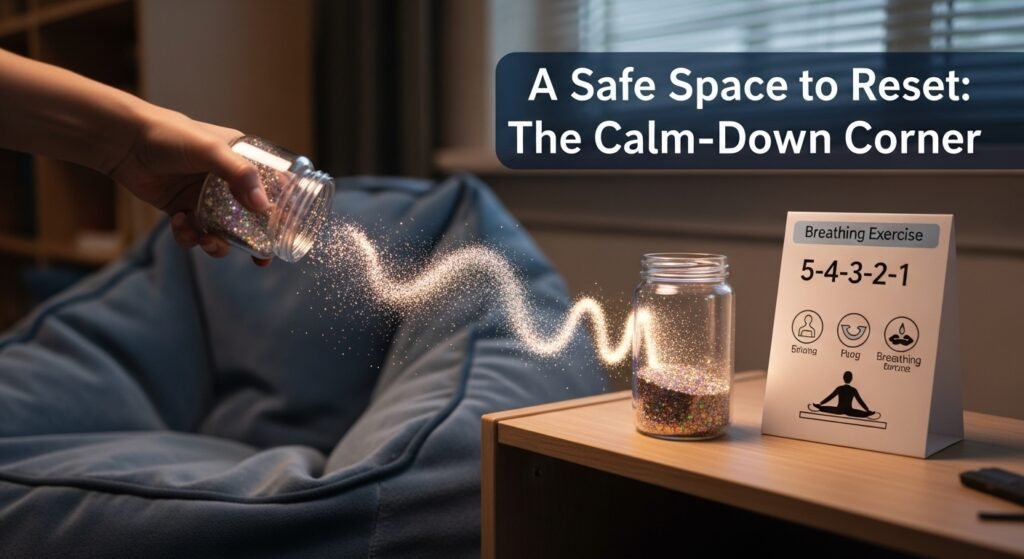
2. Developing Self-Management: The “Timeout” & “Calm-Down Corner”
Self-management is about having strategies, not just willpower.
- Strategy: Co-create a “Cool-Down Corner” or “Peace Place” in your classroom. This isn’t a punishment zone; it’s a proactive tool. Stock it with fidget toys, calming glitter jars, breathing exercise cards, and simple prompts.
- In Practice: Teach students the “Figure 8 Breath” (tracing the infinity symbol with their finger while breathing slowly) or “5-4-3-2-1” grounding (name 5 things you see, 4 you feel, 3 you hear, 2 you smell, 1 you taste). When Leo felt frustrated, he knew he could grab a breathing card and take a two-minute self-regulated break to reset.
3. Cultivating Social Awareness: Perspective-Taking through Literature
Books are windows into other lives and emotions.
- Strategy: Use read-alouds and class literature to explicitly teach perspective-taking. Stop and ask questions that force students to step into a character’s shoes.
- In Practice: “Why do you think the character made that choice? How would you feel if you were in their situation? What does this character need that others aren’t seeing?” This practice builds the empathy muscle directly and allows students to practice it in a low-stakes, fictional context.
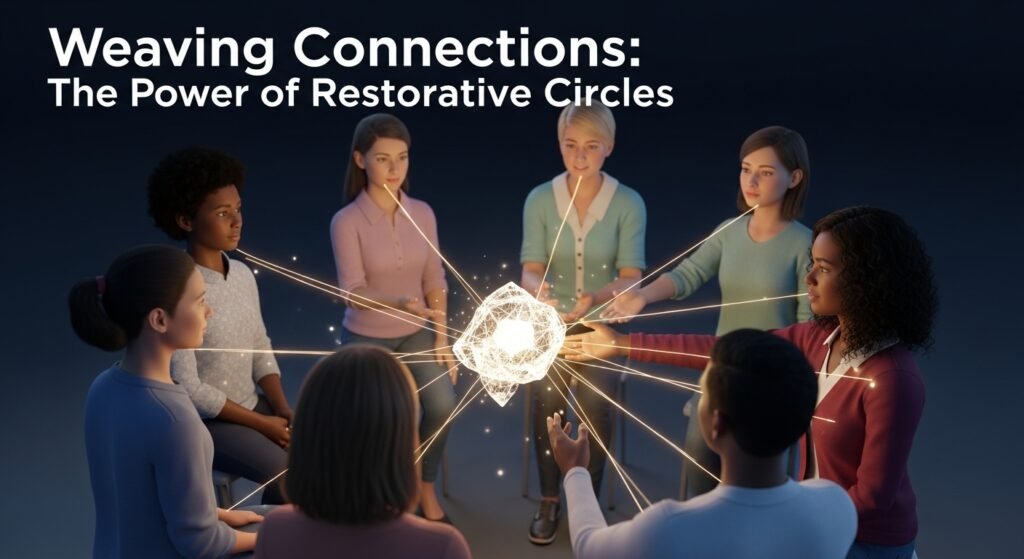
4. Strengthening Relationship Skills: Restorative Circles
Communication and conflict resolution are skills that must be taught and practiced.
- Strategy: Implement regular classroom circles. Everyone sits in an equal circle and a “talking piece” is passed around. This ensures everyone has a voice. Use prompts for community-building (“Share something you’re proud of”) or for addressing conflicts (“How did that incident impact you?”).
- In Practice: After a disagreement between two students, a mini-circle with them and a mediator can use prompts like: “What happened?” “What were you thinking and feeling at the time?” “Who has been affected?” and “What needs to happen to make things right?” This process repairs harm and rebuilds relationships instead of simply punishing offenders.
5. Fostering Responsible Decision-Making: Scenario-Based Learning
Life is made of choices. Let them practice.
- Strategy: Present realistic, age-appropriate ethical dilemmas in small groups. “You see a friend cheating on a test.” “Your group is arguing about what project to do.”
- In Practice: Facilitate a discussion using a framework: “What are your options? What are the potential consequences of each option for yourself and others? Which option aligns with your values?” This structured practice makes them more likely to pause and think before acting in real-life situations.
Best Remote Internship Programs in 2025
The Teacher’s Role: From Instructor to Facilitator
Embracing Social-Emotional Learning requires a shift in our own identity. We move from being sole knowledge-dispensers to facilitators of human growth. This means we must also engage in our own Social-Emotional Learning. Modeling is the most powerful teaching tool. When we mess up, we apologize. When we feel frustrated, we name it and use a coping strategy in front of the class. We show them that this is a lifelong practice, not a perfected state.
The Ripple Effect
Investing in Social-Emotional Learning is an investment in a future we all want to live in. It’s about graduating students who are not only proficient in reading and math but are also self-aware, empathetic, and equipped to handle life’s inevitable challenges. It transforms classrooms from factories of information into gardens of human potential.
That day with Leo ended differently. We talked about frustration. We practiced raising a hand for help instead of shutting down. The class learned a new word for a common feeling. And a paper airplane, once a symbol of disruption, became our catalyst for connection.
What is one small SEL strategy you could try in your classroom or home this week? Share your ideas and experiences in the comments below—let’s learn and grow this practice together.

